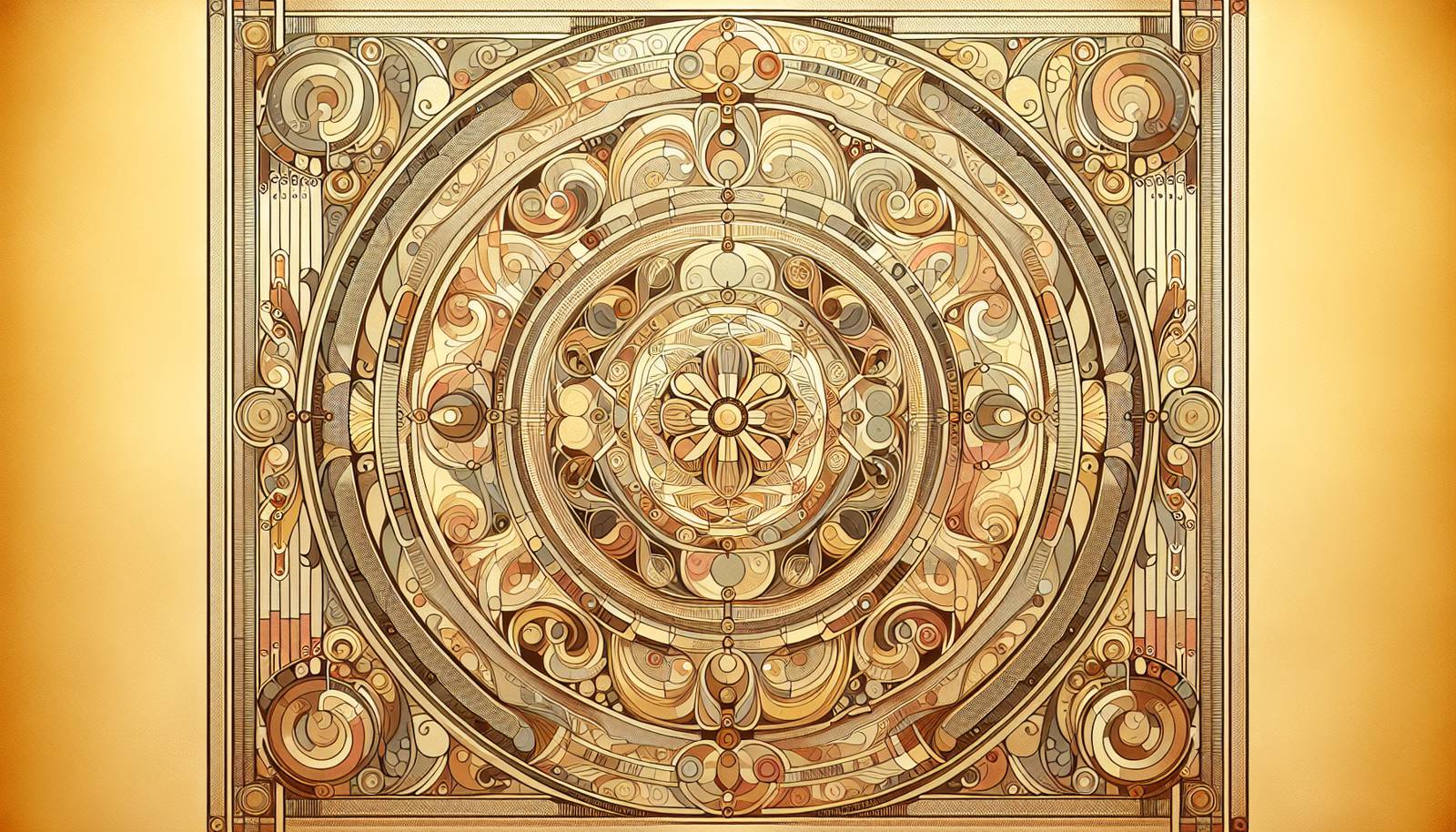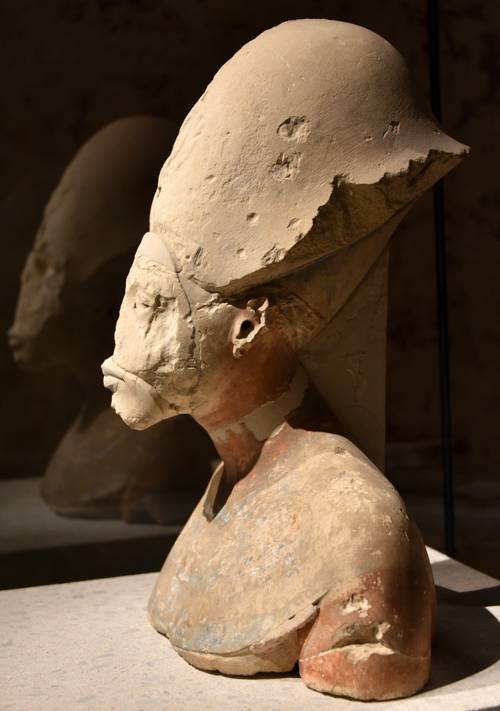
FAQ About Pharaoh Akhenaten

Who was Pharaoh Akhenaten?
Pharaoh Akhenaten was an Egyptian ruler of the 18th Dynasty, best known for his religious reform that shifted ancient Egypt from traditional polytheism to monotheism centered around the worship of Aten, the sun disc. He ruled between approximately 1353 and 1336 BC.

What religious changes did Akhenaten implement?
Akhenaten is renowned for introducing monotheism to Egypt, focusing on the worship of Aten, the sun disc, as the sole god. This significant shift saw the diminishment of the established Egyptian gods, particularly Amun, and the disruption of traditional religious practices.

Why is Akhenaten sometimes referred to as the 'Heretic Pharaoh'?
Akhenaten is often called the 'Heretic Pharaoh' because his religious reforms were radical and deviated from the long-established polytheistic traditions of Egypt. By promoting the worship of Aten and neglecting other deities, he upset the powerful priesthoods and disrupted the social order.

What is the significance of Aten in Akhenaten's reforms?
In Akhenaten's religious reforms, Aten was elevated to the status of the sole deity, which marked a monumental shift from the Egyptian practice of worshipping a pantheon of gods. This change was symbolized in art and culture, with Aten's imagery, such as the sun disc with rays, becoming prevalent.

How did Akhenaten's reign affect Egyptian society?
Akhenaten's reign had profound effects on Egyptian society, primarily through the religious transformation which affected every level of society, from the priests to the common people. Many temples were closed, and art and architecture from his era illustrate the unique Aten-centric focus.

Where did Akhenaten establish his new capital and why?
Akhenaten established a new capital called Akhetaten, now known as Amarna, in central Egypt. He chosen it due to its untainted location, devoid of previous religious associations, intending to build a society centered around the worship of Aten.

What is known about Akhenaten's family life?
Akhenaten was married to Nefertiti, one of ancient Egypt's most famous queens, and they had six daughters. His family life is depicted in various artworks, showing a more intimate and affectionate side not common in previous kings' portrayals. Additionally, he was the father of Tutankhamun.

What happened after Akhenaten's death?
Following Akhenaten's death, there was a swift return to Egypt's traditional religious practices. His successors, including Tutankhamun, worked to restore the polytheistic beliefs and diminish Akhenaten's legacy, even abandoning his capital, Akhetaten.

Why did Akhenaten's religious reforms face resistance?
Akhenaten's religious reforms faced resistance because they disrupted the traditional polytheistic worship that had been practiced for millennia. The reforms diminished the influence and power of priests associated with other deities, particularly Amun, leading to social and political friction.

What impact did Akhenaten's reign have on Egyptian art?
Akhenaten's reign prompted a revolution in Egyptian art known as the Amarna style, marked by more realistic and less idealized portrayals. This included depictions of the royal family in intimate settings and imagery that highlighted Aten.

How did succeeding pharaohs deal with Akhenaten's changes?
Succeeding pharaohs quickly worked to undo Akhenaten's religious changes. They restored the worship of traditional gods, like Amun, and attempted to erase Akhenaten's legacy by removing his name from monuments and restoring old temples. Tutankhamun's reign, in particular, marked this return to tradition.

What are some architectural achievements from Akhenaten's rule?
During Akhenaten's rule, significant architectural achievements included the construction of the new city Akhetaten and the Great Temple of Aten. These constructions featured open-air temples for the worship of Aten, with unique designs that departed from traditional Egyptian architectural styles.

How did Akhenaten's changes affect the Egyptian economy?
Akhenaten's changes had mixed effects on the Egyptian economy. The closure of traditional temples and the focus on Aten could have impacted traditional economic activities tied to religious practices. Additionally, resources were diverted to construct the new capital, Akhetaten, leading to potential economic strains.

What is the significance of the Amarna Letters?
The Amarna Letters are a significant collection of clay tablets discovered at Akhetaten. They consist of diplomatic correspondence between the Egyptian administration and other contemporary powers, providing valuable insights into the political landscape, foreign relations, and international diplomacy of the time.

What was Akhenaten's legacy on future monotheistic religions?
While Akhenaten's monotheism was short-lived and reversed after his death, some historians speculate that his concept of a single deity might have influenced future monotheistic religions. However, tangible evidence of direct impact on later religious traditions is lacking.

Did Akhenaten significantly change Egyptian funerary practices?
Akhenaten's emphasis on Aten did alter certain funerary practices, incorporating new religious texts and iconography centered on Aten. However, the foundational aspects of Egyptian burial customs, like the focus on the afterlife, remained largely consistent with traditional beliefs.

Who succeeded Pharaoh Akhenaten?
Pharaoh Akhenaten was succeeded by Smenkhkare, who ruled briefly, followed by Tutankhamun, his famous son. Tutankhamun restored many of the traditional religious practices and aimed to distance his rule from Akhenaten's legacy.

How has modern archaeology shed light on Akhenaten's era?
Modern archaeology has illuminated Akhenaten's era through discoveries such as the city of Amarna, the Amarna Letters, and numerous artifacts. These findings provide insights into his religious reforms, artistic strides, and the broader socio-political dynamics of his reign.

What distinguishes the art from Akhenaten's reign from earlier periods?
Art from Akhenaten's reign, known as the Amarna style, is distinguishable by its realism and fluidity, contrasted with the rigid and formulaic depictions of earlier periods. This art often featured naturalistic portrayals and intimate family scenes, uncommon in previous Egyptian art.
